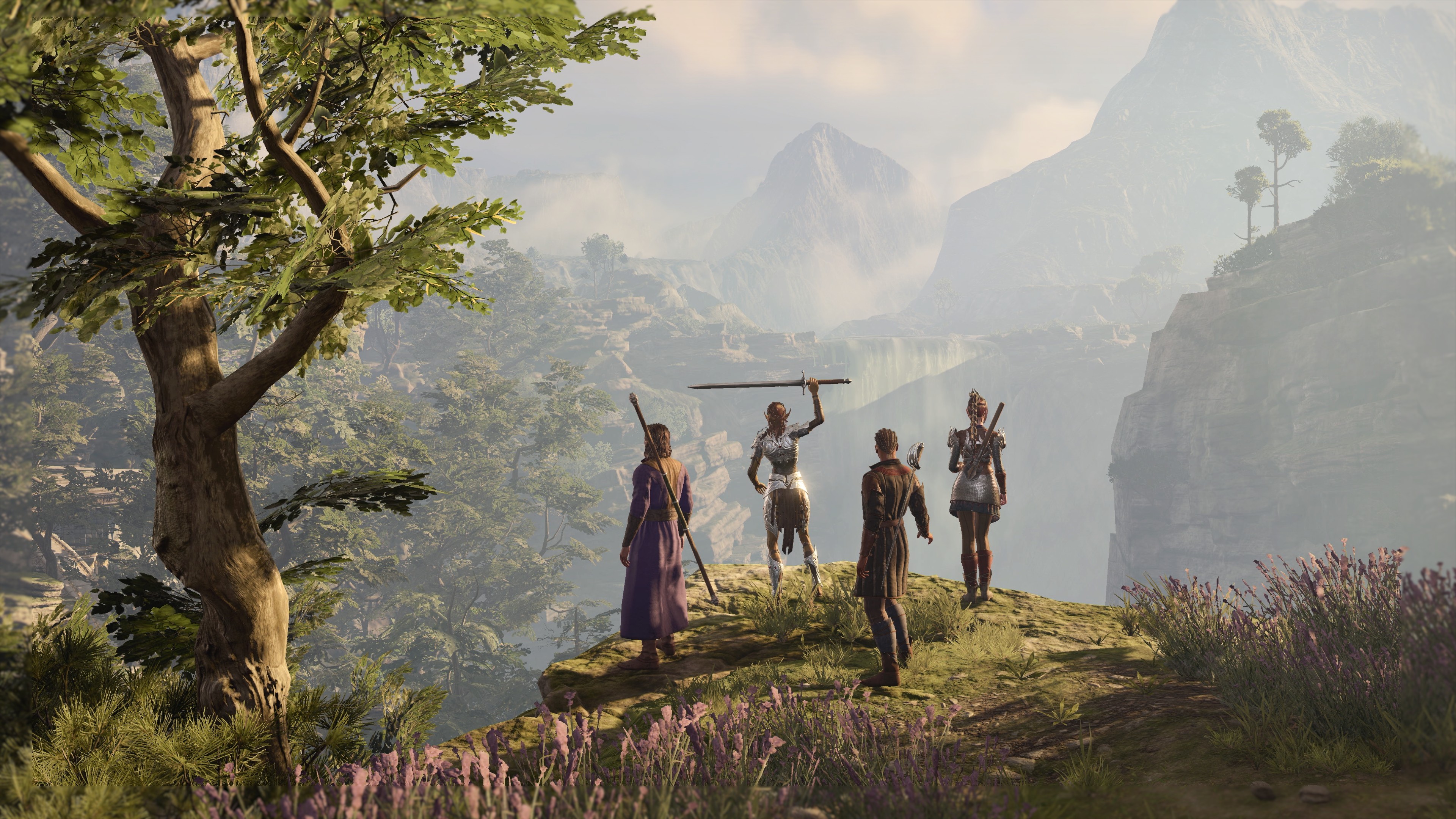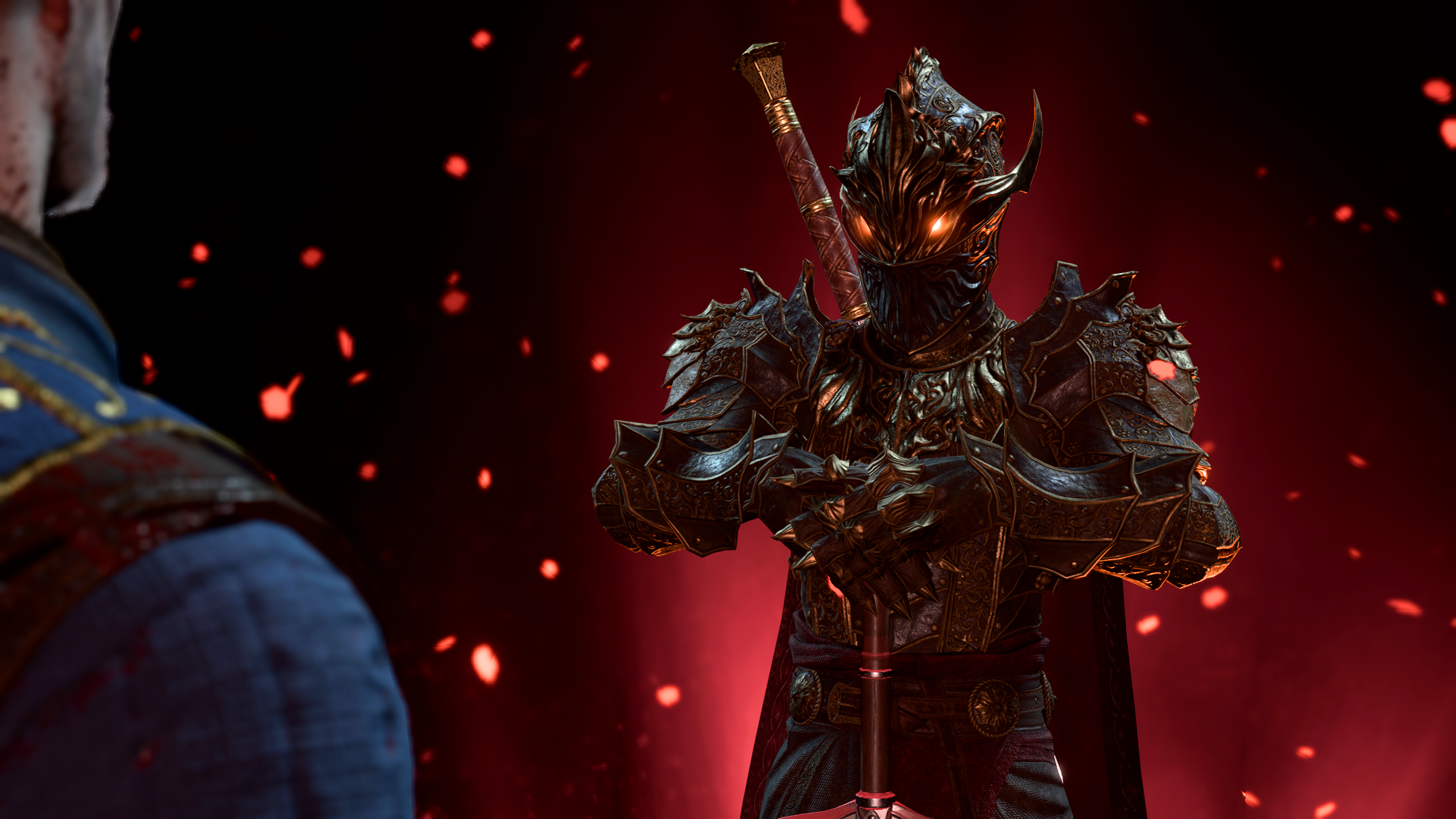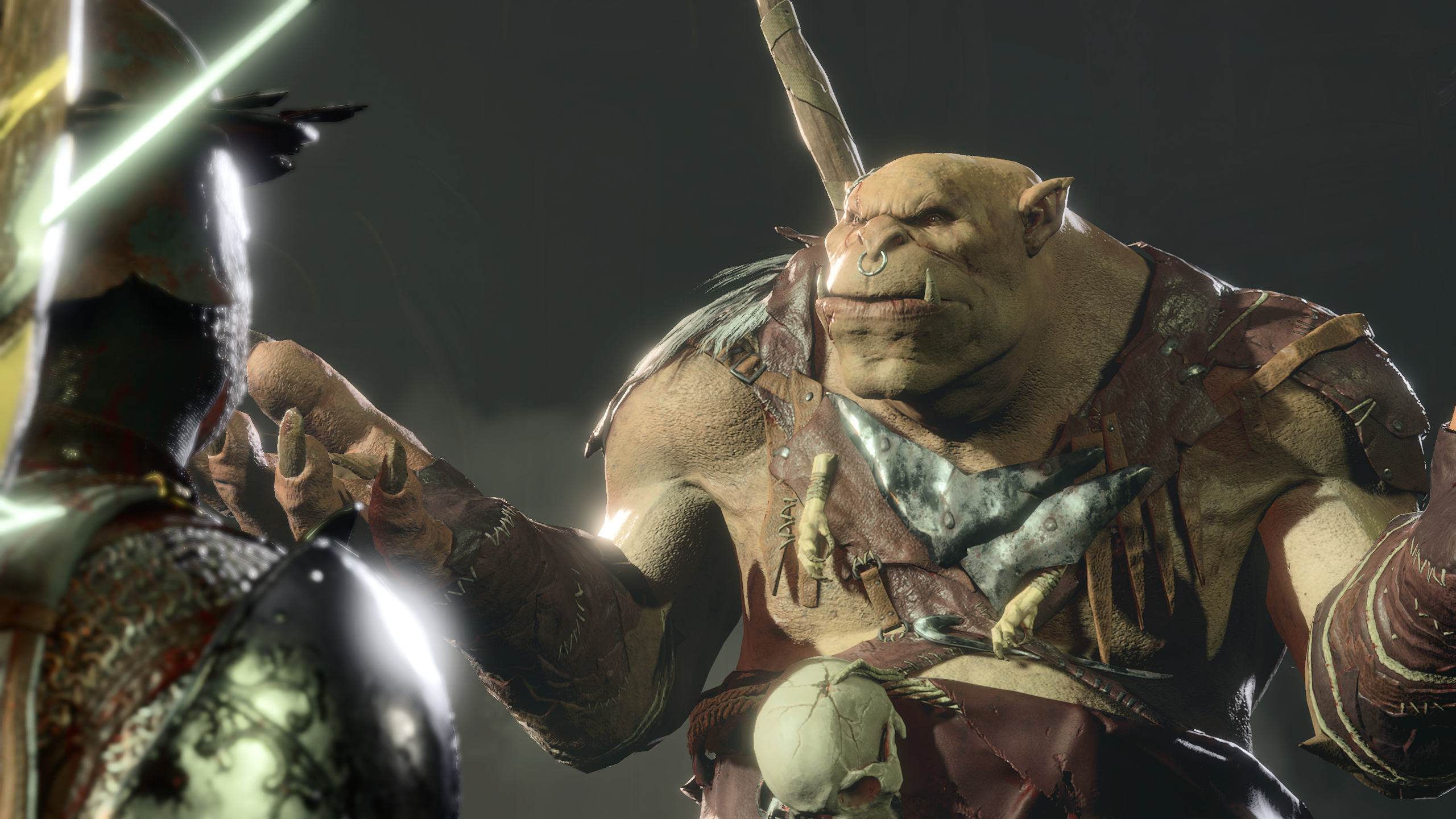
My best memories of Dungeons & Dragons are all from the first couple sessions, where your party is operating on a level somewhere between the gang from It's Always Sunny in Philadelphia and Blood Meridian. You are five broke hobos who will do absolutely anything to survive. You're ambushing people in dark corners with hammers like the elevator scene in Drive. You're pushing knights wearing heavy armor into small ponds and drowning them. You're breaking into houses and dead sprinting to where the valuables are because you cannot pass the stealth check. It's always a blast, and Baldur's Gate 3 totally realizes that early game spontaneity and inventiveness by embracing the principles of the immersive sim, a genre associated with many of the classics of PC gaming.
Pen and paper RPGs and immersive sims like Deus Ex, System Shock, and the Prey remake operate along the same lines: the player looks at a problem, asks, "Can I do this?" and the game or gamemaster says yes or no, with a bias for "yes, and here's why it was a really bad idea." Immersive sims are less of a genre and more of a vibe, kind of in the same way as CRPGS (where the C stands for "computer", confusingly).
Like Larian's last big RPG, Divinity: Original Sin 2, Baldur's Gate 3 is a synthesis of the RPG and the immersive sim—particularly in the way it simulates physical properties like the mass of an owlbear—with this one emphasizing player choice and expression to a degree hitherto unforeseen.
Did you know that you can get one of the best swords in the early game by having Shadowheart use the Command: Drop spell on Commander Zhalk, an NPC who appears in the prologue and is more or less the general who shouts at you during a Call of Duty tutorial? I didn't either, until my manager at work told me that's how he skipped fighting him. That "you can do that!?" energy, a mix of bemusement and shock, is a feeling PC games used to shoot for more often than any others. Deus Ex, System Shock 2—these are games built around a complex logic core of interwoven systems, all acting in concert to sell the feeling of a world that reacts meaningfully to the player's choices.
The mind boggles at the complexity of designing a narrative that can withstand the player impulsively and permanently killing key characters within moments of meeting them.
Apparently, two arch-nemesis companions encountered in the first act can become great friends if you patch over their misunderstanding, so I guess I overreacted when I murdered one of them were they stood. Oops! And another companion, afflicted with a condition that can only be abated by consuming all your good loot, got on my nerves enough that I told him to go die, not expecting him to actually wander off and do it.
These misreadings of social situations and subsequent overreactions are permanent, and as bummed as I am to be depriving Karlach of a drinking buddy, I'm eager to go back and give the early game another run with a different character—one that doesn't jump the gun so often. The mind boggles at the complexity of designing a narrative that can withstand the player impulsively and permanently killing key characters within moments of meeting them.
"I can see their dialogue trees in my mind's eye and even if a lot of the cinematic setup for those conversations are automated, it's a massive amount of work to stage them," Obsidian studio design director Josh Sawyer commented recently.

That complexity also extends to character building and progression—my character fumbled the first true combat encounter with the tieflings who captured Lae'zel, tricking them into turning around before I puleverized them with a hammer. Immediately, a Black Knight appeared before me, a towering figure wreathed in shadow, stripping me of my class abilities and forcing me to dawn the mantle of Oathbreaker, a damage-focused tank subclass with powerful necromancy abilities.
What really stands out about Baldur's Gate 3's success is how uncompromising it is. Deus Ex: Human Revolution leaves tons of resources lying around the periphery of the area in which you need them. If you want something in Baldur's Gate 3, you gotta hustle for it.
It's the kind of game that feels like a genuinely monumental achievement.
The first major area, the goblin camp—an ancient temple of the Goddess Selune befouled by goblins mobilizing for war—can play out in wildly different ways depending on your approach. Stand up fights with the trio of leaders are punishing, drag out beatdowns that can easily wipe out your whole party, and it's unlikely that you've got much more than your starting gear and a few potions. You can, with enough sidequesting, obliterate the camp from the outside in, but it's way more likely that you wind up approaching this problem like Agent 47.
I lied to one of the camp's leaders about my faith and convinced her to walk into her dark quarters alone, vampire rogue Astarion lying in wait in the shadows, not even leaving her time enough to call the guards. Then, after having Astarion stealthily disable the goblin war drums in the rest of the sanctum, the goblin shamans became the victims of an hour-long guerilla campaign. Under these supremely optimal conditions, I brought my party to bear with the unwashed hobgoblin tyrant Dror Ragzlin in what might be the most absurdly one-sided battle I've ever faced in an RPG.

Because I bartered a deal with a weird ogre who talks like William F Buckley, I had ample reinforcements: three lumbering tanks who instantly turned the lesser goblins into red and green slurry. I didn't even have to touch Dror Ragzlin, instead throwing flammable grease pools under his feet and watching from the sidelines as he kept slipping and falling like he was in the Three Stooges. The drow I did wind up facing in a stand-up fight, but only after I snuck back to the worg pens and enlisted the druid Halsin, who basically mauled her to death in two turns.
And you don't have to look very far to see people doing way more out-there stuff. Critical Role's Matt Mercer made a tower of boxes tall enough to teleport himself on top of the The Counting House with an arrow of transposition, and this absurd TikTok shows Gale shrinking one of the paladins of Tyr down to the size of a small infant for Karlach to punt like a football.
The experience playing Baldur's Gate 3 feels like a culmination of years of game design innovation. Larian has married the open-ended RPG to a story and characters that I actually care about, intertwining narrative and mechanics in the same ingenious ways a good DM does. It's the kind of game that feels like a genuinely monumental achievement. A game with a world so reactive and engaging that it's penetrated into the mainstream—it was all me and my step-brother could talk about at a family get together Sunday, and mere hours later, my RPG-loving dad who swore off videogames years ago texted me a photo of a PS5 on sale at Costco asking if it was a good price. Baldur's Gate 3 feels like an RPG that will define an era, just like the classic immersive sims did for theirs.







